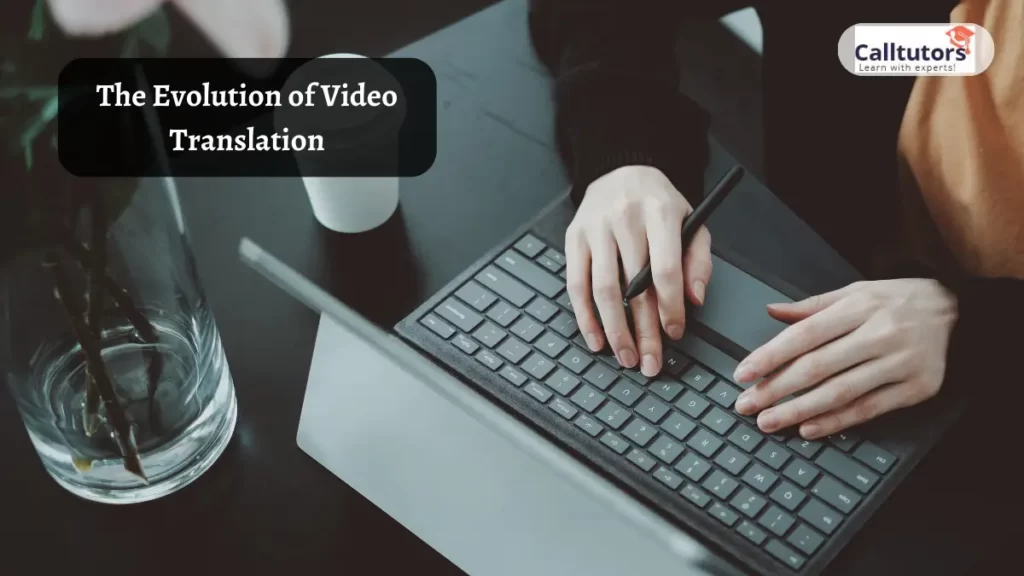Video translation has undergone a remarkable evolution over the years, transforming the way we consume and understand content in different languages. From the early days of subtitles to the advent of Neural Machine Translation (NMT), technology has played a pivotal role in improving the quality and efficiency of video translation.
In this article, we will explore the journey of video translation and delve into the benefits of AI video translation, specifically focusing on translating a video from Spanish to English. By leveraging the power of AI, we can now enjoy enhanced translation quality and faster delivery, revolutionizing the way we experience multilingual video content.
The Evolution of Video Translation
Table of Contents
The Rise of Subtitles: A Foundation for Multilingual Content
Subtitles have long been a staple in video translation, allowing viewers to read translated text on the screen while watching the original video. While subtitles have facilitated cross-cultural communication, they have their limitations. Subtitles often take up valuable screen space and may distract viewers from the visual content. Additionally, they require separate files or manual input, making the translation process time-consuming and labor-intensive. However, subtitles laid the foundation for video translation and served as an essential stepping stone toward more advanced technologies.
Enter AI Video Translation: Unleashing the Power of Neural Networks
AI video translation, powered by Neural Machine Translation, has revolutionized the field, providing unparalleled benefits over traditional methods. Neural networks can process vast amounts of data, learn patterns, and generate translations that are remarkably accurate and contextually sound. When it comes to translating a video from Spanish to English, AI video translation excels in both quality and speed.
Quality Translation: Capturing Context and Nuances
One of the primary advantages of AI video translation is its ability to capture the context and nuances of the original video. Traditional methods often struggle with accurately conveying the intended meaning, resulting in translations that may lack clarity or precision.
AI technology, with its sophisticated algorithms and deep learning capabilities, comprehends the subtleties of language and produces translations that are faithful to the original content. By translating a video from Spanish to English, AI ensures that viewers can fully grasp the message, tone, and emotions conveyed by the video, enhancing their overall viewing experience.
Faster Delivery: Real-time and On-demand Translation
Another significant benefit of AI video translation is its speed and efficiency. In the past, translating videos was a time-consuming process, often requiring manual intervention and extensive post-production work. With AI, the translation process is accelerated, enabling real-time or on-demand translations. This is particularly valuable for live broadcasts, news updates, and time-sensitive content.
By seamlessly translating a video from Spanish to English, AI technology enables viewers to access translated content almost instantaneously, eliminating delays and ensuring a smooth and uninterrupted viewing experience.
Multilingual Accessibility: Breaking Language Barriers
AI video translation has the power to break language barriers, making content accessible to a global audience. By translating a video from Spanish to English, AI technology enables Spanish-speaking content to reach a broader English-speaking audience and vice versa.
This not only promotes cultural exchange but also facilitates cross-border communication, education, and entertainment. AI video translation fosters inclusivity and expands the reach of content, allowing for a more connected and diverse global community.
The Future of Video Translation: Constant Innovation
The evolution of video translation is an ongoing journey of innovation and advancement. AI technologies continue to evolve, with ongoing research and development further improving translation quality, speed, and accuracy. As AI becomes more sophisticated, we can expect even more refined and seamless video translation experiences. From real-time voice recognition to augmented reality overlays, the possibilities are vast, promising an exciting future for video translation.
Conclusion: The Evolution of Video Translation
AI video translation has transformed the landscape of multilingual content, offering enhanced translation quality and faster delivery. As we have evolved from subtitles to neural machine translation, we have witnessed the power of technology in bridging language gaps and fostering global communication.
As we continue to embrace AI video translation, the barriers that once hindered cross-cultural understanding will continue to crumble, enabling us to connect, learn, and appreciate diverse content from around the world. The future of video translation is bright, and we can look forward to a world where language is no longer a barrier to accessing and understanding video content.
Also Read: 4 Easy Steps On How To Make A Video Essay



